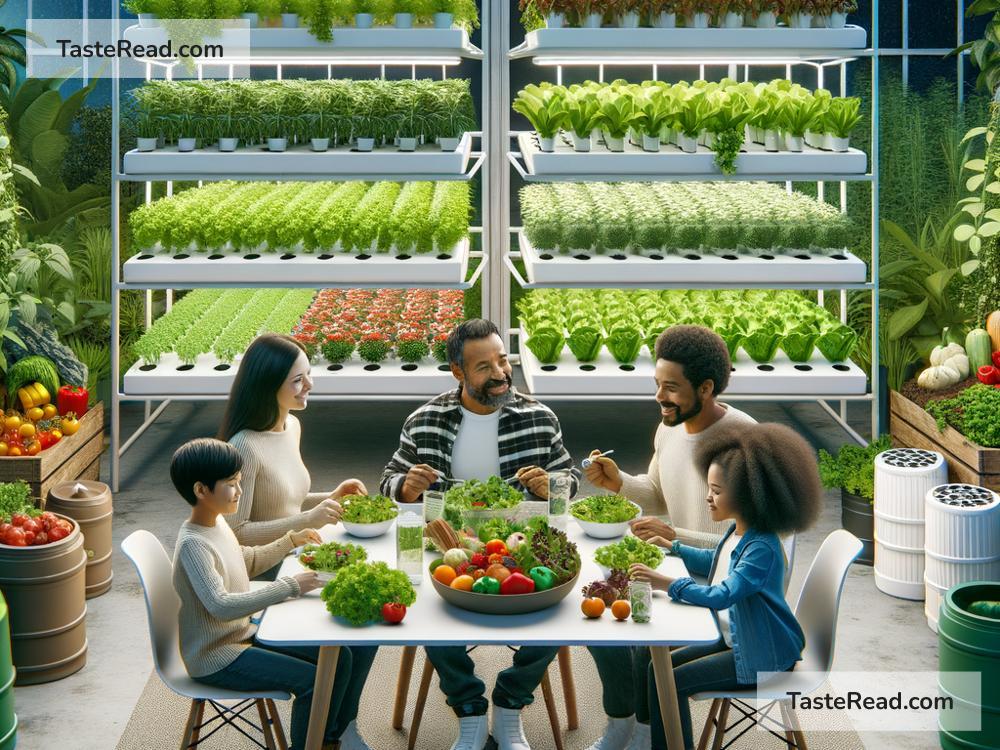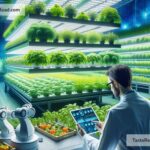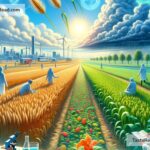The Future of Circular Food Economy: A Path Toward Sustainable Eating
In a world where climate change, resource depletion, and food waste are significant challenges, the concept of a circular food economy is rapidly gaining attention. But what does “circular food economy” mean, and why is it so important for the future?
A circular food economy is an innovative way of thinking about how we grow, process, consume, and discard food. Unlike the traditional linear system—where food is produced, consumed, and disposed of—a circular food economy designs food systems to be more resource-efficient, waste-free, and regenerative. It aims to create a loop where resources are reused and recycled rather than thrown away. This simple yet radical shift has the potential to transform how we feed the planet sustainably.
The Problem: Why Do We Need Circular Thinking?
Food waste is a staggering issue worldwide. According to the UN Food and Agriculture Organization (FAO), approximately one-third of all food produced globally is wasted. This waste not only squanders precious natural resources but also contributes to greenhouse gas emissions as food decomposes in landfills. At the same time, agriculture accounts for almost 70% of global freshwater use, and large-scale farming practices are depleting soil health and biodiversity.
The linear food economy that dominates our current system puts immense pressure on the natural environment. It also struggles to meet the needs of a growing population, which is expected to hit 10 billion people by 2050. Clearly, we need a smarter, more sustainable way to produce and consume food—one that doesn’t harm the planet while meeting everyone’s needs. This is where the circular food economy comes in.
What Is the Circular Food Economy?
At its core, the circular food economy is a system that mimics how nature works. In nature, waste doesn’t exist—everything is reused and reintegrated into the ecosystem. For instance, fallen leaves become compost that nourishes the soil, and leftover food in the wild is consumed by other animals. A circular food economy applies these principles to human food systems.
There are three key ideas that shape the circular food economy:
- Regenerating Natural Systems: Instead of exhausting natural resources, farming techniques aim to rebuild soil health, protect biodiversity, and minimize water use.
- Reducing Waste: Food waste is prevented through better planning, technology, and awareness. Any unavoidable waste is turned into valuable resources—like compost, animal feed, or energy.
- Using Renewable Inputs: Instead of relying on synthetic fertilizers or fossil fuels, the circular system encourages the use of renewable materials to close the loop.
By adopting these practices, communities can create food systems that are environmentally friendly and resilient to disruptions.
The Future of Circular Food Economy
The future of the circular food economy is promising—and it’s already taking shape around the world. Advances in technology, growing consumer awareness, and government policies are paving the way for a sustainable food revolution. Here are some key developments that show where we’re headed:
1. Smarter Food Production
Farmers are increasingly adopting sustainable practices such as regenerative agriculture. This method focuses on improving soil health, replenishing ecosystems, and reducing greenhouse gas emissions. Techniques like crop rotation, cover crops, and using organic matter for fertilization contribute to healthier land and higher crop yields.
Technology is also playing a big role. Precision farming uses sensors, drones, and artificial intelligence (AI) to optimize water use, reduce chemical inputs, and track crop health. This makes farming more efficient and eco-friendly.
2. Upcycling Food Waste
One of the most exciting trends in the circular food economy is food waste upcycling. Companies and innovators are finding creative ways to turn discarded food into valuable products. For example, surplus fruit can be transformed into jams or healthy snacks, while leftover grains from beer production can be used to make bread.
In addition, advanced composting systems are turning food scraps into nutrient-rich soil additives. Even high-tech solutions like anaerobic digestion are taking center stage, converting organic waste into biogas for renewable energy.
3. Changing Food Habits
Consumers are becoming increasingly aware of the environmental impact of their food choices. More people are opting for plant-based diets, reducing meat consumption, and supporting local farmers. These shifts not only benefit personal health but also reduce the demand for resource-intensive food production.
Technology is helping consumers make smarter choices, too. Apps that track food waste, suggest recipes for leftovers, or connect users with local food-sharing initiatives are gaining popularity. These tools empower individuals to contribute to the circular economy in everyday ways.
4. Supportive Policies and Collaboration
Governments and organizations are taking steps to support circular food systems. Policies promoting sustainable farming practices, banning single-use plastics, and requiring businesses to tackle food waste are setting the groundwork for change.
Collaboration between sectors—such as food producers, technology companies, and researchers—is essential. Many cities and regions are pooling resources to innovate together, creating local solutions that can be scaled globally.
Challenges and Opportunities
While the potential of a circular food economy is immense, the transition won’t be easy. Challenges like high upfront costs for farmers, lack of infrastructure, and resistance to change are significant hurdles. However, with growing urgency to address climate change and food insecurity, the momentum is building.
Every stakeholder in the food system—farmers, businesses, governments, and consumers—has a role to play in making this vision a reality. The good news is that the circular food economy is not just better for the planet—it’s better for people, too. It creates jobs, improves access to nutritious food, and builds stronger, more resilient communities.
Conclusion
The future of the circular food economy is bright and filled with promise. By shifting our focus from short-term gains to long-term sustainability, we can create a world where food systems work harmoniously with nature. From smarter farming and waste reduction to innovative technologies and policy changes, countless opportunities exist to reshape our food future.
Our choices matter. Whether it’s composting at home, supporting local farms, or advocating for sustainable food policies, every action counts toward building a circular food economy. Together, we can ensure that the food we eat not only nourishes us but also protects the planet—for generations to come.


